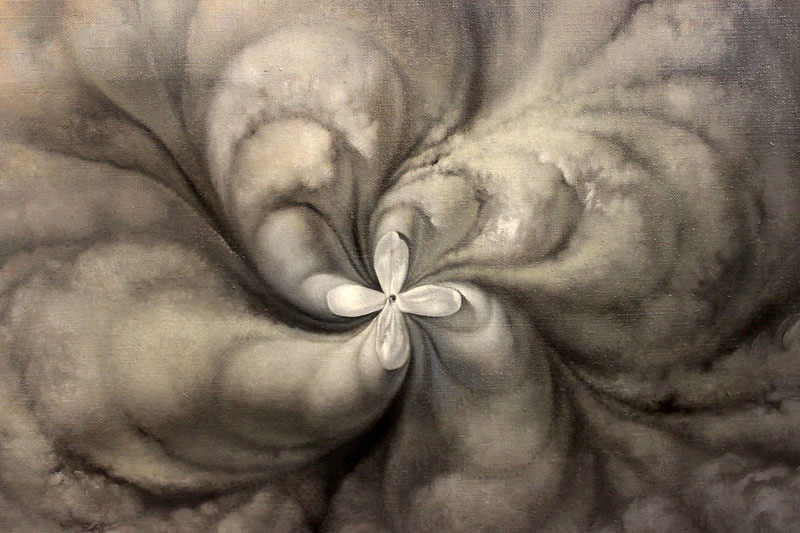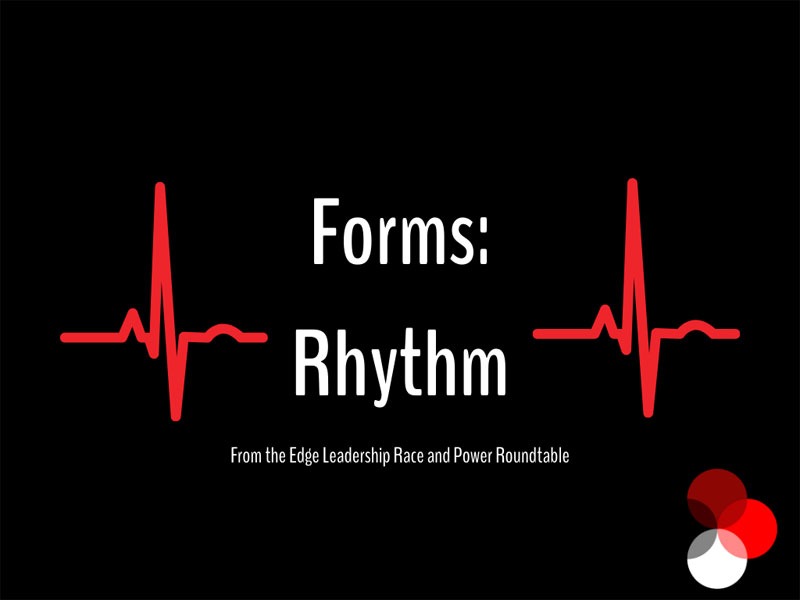
You’ve probably noticed that social change practitioners often replicate the structures they, or we, seek to oppose. One of the reasons I wrote The Power Manual is that I often couldn’t tell the difference between my activist peers and the people they were organizing against. Oh, sure, we had different goals and maybe even different values, but we used the same structures and were surprised that we often unwittingly recreated the same challenges.
I recall a young woman of color who contacted me a few years ago. She was hired by an organization that had undergone a racial justice change process. It was now led by a Black person and had a primarily people-of-color staff. But they realized they were still a white supremacist organization. She was using my book as a guide in redesigning toward a liberatory organization and was inquiring about any help I could provide. Her story is a perfect example of why diversity doesn’t work to shift power. Eventually, we have to consider the forms we inhabit, which oftentimes are the source of so many problems in our work.
The conversations I’ve had with readers of my book have had a theme: How do leaders of color redesign historically white organizations—or away from white supremacist culture?
Organizations are working on their own trying to figure out how to restructure themselves, as they are also taking on more complex work, often with a philanthropic field that is steps behind them. Thus, this work is often unfunded.
So, I was intrigued when I first came across Caroline Levine’s book Forms: Whole, Rhythm, Hierarchy, Network, in which she proposes a new theory of change:
If forms always contain and confine, and if it is impossible to imagine societies without forms, then the most strategic political action will not come from revealing or exposing illusion, but rather from a careful, nuanced understanding of the many different and often disconnected arrangements that govern social experience.1
Edge Leadership (a social change R+D platform hosted by NPQ) recently invited Caroline Levine as the first special guest of our new online show. (See excerpts here and here.) Levine’s proposition has been key to the design of the Edge platform. Her work and mine intersect on forms and power. She looks at forms and asks questions about power. I explore power and ask questions about forms.
Levine’s theory of forms offers two things: an analysis of how forms shape power and an outline of the four most important forms shaping us. There are at least five key ways that forms shape power:
- Forms constrain: They impose “powerful controls and containments.”
- Forms differ: There are “rich vocabularies and highly refined skills for differentiating among forms.”
- Forms overlap and intersect: Various schools of thought (including intersectional analysis) have “developed methods for analyzing the operation of several distinct forms operating at once.”
- Forms travel: Forms move in two ways: they “can survive across cultures and time periods,” and they move “back and forth across aesthetic and social materials.”
- Forms do political work: Forms matter because they “shape what it is possible to think, say, and do.”2
The four main forms are whole, rhythm, hierarchy, and network. While some of these have positive reputations and others negative ones, all forms have positive and negative uses. And reality always exceeds form.
WHOLE is totality, unity, containment. It is a unifying power, the “capacity to hold together disparate parts.”3 It is also “a broader desire to regulate and control—to dominate the plurality and heterogeneity of experience.”4 So it is both the desire for unity and the desire for control. The power to hold things together requires violence. However, “no single ideological or political whole successfully dominates or organizes our social life.”5 So instead of focusing on deconstructing or disrupting wholes, we can multiply them. We can introduce more wholes, curtailing the totaling power of any single whole. The goal then is “to think about how one might put bounded wholes to work for strategic ends.”6
RHYTHM is temporal order, repetitive patterns that impose constraints across time. It is particularly effective for social cohesion. Levine notes that “the attempt to impose temporal order has certainly been a hallmark of large-scale modern uses of power.”7 Periodization, the process of categorizing the past into discrete blocks of time, is a rhythm. Historical time is transhistorical organizing. Institutions also comprise rhythms or “patterns of duration and repetition over time.”8 They endure because participants “reproduce their rules and practices.”9 However, more often than not, institutions have repetitive patterns that do not align but are uncoordinated.10 As a form, rhythm tends to be plural and conflicting. Levine concludes, “In order to understand the political and social power that temporal forms exert—their capacity to regulate and organize our lives—we need a kind of analysis capable of revealing how temporal patterns collide.”11
Sign up for our free newsletters
Subscribe to NPQ's newsletters to have our top stories delivered directly to your inbox.
By signing up, you agree to our privacy policy and terms of use, and to receive messages from NPQ and our partners.
HIERARCHY is the arrangements of bodies, things, and ideas in order of importance. According to Elliott Jaques, one of the leading thinkers of the model, 75 to 90 percent of working people in “economically developed nations” work in “managerial accountability hierarchies” where work is done by means of specialization of functions in vertical organizations, where each level is able to hold more complexity than the level below.12 At least, it should be. When it doesn’t, the hierarchy becomes dysfunctional.
Hierarchies also abound in nature, in knowledge, and functional organization. Genes are organized in our DNA this way, the expression of one being necessary to activate another. Knowledge in the human brain appears to be hierarchically organized. And living systems are organized in successive organization levels, from genes to ecosystems. There are also developmental hierarchies, where the next level of development includes the former, but the former does not include the next, like nested dolls.
What underlies hierarchical thinking is binaries or dichotomous thinking, which doesn’t just distinguish but ranks two polarized terms, such that one becomes privileged and the other subordinated. In The Power Manual, I describe how a perception of difference is what triggers power dynamics. It is not surprising, then, that hierarchies “foster an obsession with advancement at the expense of other values and purposes.”13 Or that “the most consistent and painful affordance of hierarchical structures is inequality.”14 Thus, hierarchies “play an important role in modern understandings of power.”15
However, upon closer study, Levine finds that hierarchies “exert a far less orderly and systematic kind of domination than we might expect.”16 She cites social scientists who are discovering that hierarchies are “surprisingly fragile, unpredictable, and vulnerable to breakdown.”17 Ultimately, hierarchies break down not because of internal contradictions but due to encounters with other hierarchies that unsettle them. Thus, the most strategic approach to addressing the power exerted in hierarchies is not to seek to flatten them, but to overlay them with other forms that disturb their power.
Finally, NETWORK is the form that most affords connectedness. It links bodies, ideas, and things. It is “a set of connections that link [discrete] elements.”18 However, recent network theory research finds that “these connective configurations [also] follow knowable rules and patterns.”19 Further, “networks can jeopardize, stabilize, or reroute bounded unities.”20 The power of a network to organize depends not only on its pattern, but the way it collides with other forms, including other networks. “The network provides a way to understand how many other formal elements—including wholes, rhythms, and hierarchies—link up in larger formations.”21 Therefore, “attention to the patterns governing networks will allow us to think in newly rigorous ways about political power and social experience.”22
Thus, wholes contain space, rhythms regulate time, hierarchies differentiate and stratify, and networks connect disparate elements and disturb wholes.
In addition to offering us this simple, powerful, and practical theory of forms, Levine also suggests what we could call a sister theory when she notes that “there are many events and experiences that do not count as forms—and we could certainly pay close attention to these: fissures and interstices, vagueness and indeterminacy, boundary-crossing and dissolution.”23
The concept of forms is universal and elegant. It allows us to talk about a lot of things in a coherent and strategic way. And it gives us a more nuanced way to talk about systems. Levine concludes her exposition on forms with this important point:
“The system” is less an organized or integrated single structure than it is precisely this heaped assortment of wholes, rhythms, hierarchies, and networks.24
The study of forms offers us a new understanding of how power works. As systems around us shift—and at times collapse—it is increasingly important for social change practitioners to pay attention to the forms that we enliven and to see their design and redesign as an opportunity to advance liberatory power. But let’s do this without preconceived and unexamined notions about what they are and what they actually do.
Notes
- Levine, Caroline. Forms: Whole, Rhythm, Hierarchy, Network. Princeton, New Jersey: Princeton University Press, 2015, 18.
- Ibid., 4.
- Ibid., 24.
- Ibid., 25.
- Ibid., 39.
- Ibid., 37.
- Ibid., 50.
- Ibid., 56.
- Ibid., 58.
- Ibid., 65.
- Ibid., 51.
- Jaques, Elliott. Requisite Organization. Fleming Island, Florida: Cason Hall & Co. Publishers, 2006, 4.
- Levine, 101.
- Ibid., 82.
- Ibid., 99.
- Ibid., 85.
- Ibid.
- Ibid., 113-114.
- Ibid., 112.
- Ibid., 120.
- Ibid., 113.
- Ibid., 113.
- Ibid., 9.
- Ibid., 148.












